Michael McDonald is a 5-time Grammy winner who sang with Steely Dan and The Doobie Brothers, and has also had a notable and successful solo career. Highlights of his catalog include “I Keep Forgettin’ (Every Time You’re Near)”, “You Belong To Me”, “It Keeps You Runnin'”, “Minute By Minute”, “What A Fool Believes”, “Takin’ It To The Streets”, “Yah Mo B There”, “Sweet Freedom”, and his cover of “Ain’t No Mountain High Enough”.
This interview was for a preview article for noozhawk.com for a benefit concert on 11/7/18 at the Lobero Theatre for The Rhythmic Arts Project (TRAP). It was done by phone on 10/27/18. (Timothy White photo)
Jeff Moehlis: How did you get involved with The Rhythmic Arts Project?

Michael McDonald: [Drummer/TRAP Founder and CEO] Eddie Tuduri is my old friend. We knew each other when we both lived down in L.A. years ago. We both probably came out around the same time to L.A. He was playing the drums at the time, I believe, with J.D. Souther. It was probably around the time I was playing with Steely Dan and various bands around the valley, the Los Angeles basin. We just always kind of ran into each other at rehearsal halls, studios, places like that. In particular, I think we met over at the Alley Music Studios in what’s now known as NoHo. That was the early ’70’s, I would say.
JM: Did you reconnect with him when you moved to Santa Barbara?
MM: Yeah, we reconnected. I’m not really sure how, to tell you the truth. We just kind of ran into each other around town, or at a gig possibly. We also have a lot of mutual friends like Bill Champlin. We know a lot of the same people still to this day.
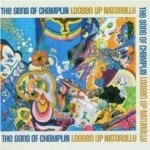
JM: Bill Champlin will also be at the TRAP event. I’m guessing that you’ve also known him for a long time?
MM: Yeah, Bill, Eddie and I all lived in the L.A. area for a while. Bill’s originally from the Bay Area, but he moved down to L.A. around the early to mid-70’s much like I did. We did a lot of background singing together. We were both studio singers and we played keyboards once in a while in the studio. We met in those circles.
JM: I’m excited that Bonnie Bramlett is also on the program. Were you a fan of Delaney and Bonnie back in the day?
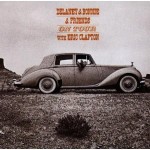
MM: Oh yeah, very much so. I used to play in a club in the Valley, the Brass Rail, and Bonnie and Delaney used to come in there quite often. They sat in with different bands there. I believe they sat in even with our band a couple times. So I knew her from there.
Bonnie comes from St. Louis, and that’s where I came from. We didn’t know each other back there, but we always had that in common, that we’re both from St. Louis.
JM: Speaking of St. Louis, I read that you once played in the backing band for Chuck Berry, I’m guessing somewhere around there. What was that experience like?
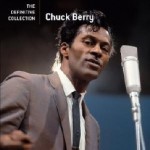
MM: It was great. We played a club out in Ferguson, Missouri back then. We were the house band in the club, a group called Jerry Jay and the Sheratons. We were kind of a large band. Particularly with a band that large, you almost have to be a house band somewhere [laughs]. And we would play different clubs. But we were one of the better known dance/R&B bands in the St. Louis area. So when Chuck played at the Castaway club, which he did once or twice a year, we were usually were the band to back him up. He would just go out and play with the house band. So I got to meet him back then.
I also knew his son-in-law and his son-in-law’s brother. We were all in bands together. And his daughters were friends, not close friends but I knew them. We played out in his club in Wentzville a couple times, too, with different bands.
Yeah, I had the occasion to back him up. The one I remember the most was at the club. He came down to play with us there. I remember we had learned a song that he had just recorded that week, and it wasn’t even pressed yet so he sent us a test pressing to learn from. It turned out to be “No Particular Place to Go”, so I was always convinced that we were the first band to play that with him live.

JM: You mentioned Steely Dan, and I have to say that I particularly love your background vocals on the song “Peg”. What do you remember about recording that particular song?
MM: I remember that session pretty well. One thing I remember about it was it was a very close chord I was singing for the harmonies. The harmony parts were pretty close intervals. So I remember I had trouble singing them listening to my other parts, so I sang each of the parts individually without hearing the other parts. Typically I don’t do that, but on that one I did just so that I could be sure I had my pitch right on each part. I wasn’t that sophisticated as a studio singer. I could sing the parts, but I had trouble singing in that kind of a close harmony.
It wasn’t until I really finished the backgrounds that I actually heard it for the first time myself, and I remember thinking, “Wow, that sounds pretty good.” [laughs] It was just because of the nature of the harmonies. They were very jazzy kinds of chords.
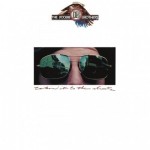
JM: Probably my favorite of your songs in “Takin’ It To the Streets”, and I know that you often close the show with that. How did that song come together?
MM: That song came from a conversation I had with my younger sister. She was in college at the time, and in her sociology class they were talking about urban economic structure in a country like the U.S. where there’s a very thin line between the haves and have nots. They were considering what was the future of the middle class, and how increasingly people were falling through the cracks, especially in urban areas, you know, below the poverty line. It was a trend that would seem to continue if we weren’t careful. That was what they were studying, and that kind of inspired the lyrics.
In Ferguson back in the ’50’s and ’60’s, when I grew up there, along economic lines there was almost the mentality of if we don’t have to see it, we don’t have to deal with it. In small towns and in urban areas in this country we’ve always kind of separated ourselves from the have nots by location, like somehow that would seem to erase the problem psychologically for city governments and state governments, and America in general. And it just doesn’t work that well once it gets to be a growing problem.
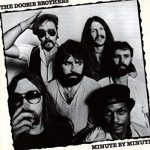
JM: One other song that I want to ask you about is “What A Fool Believes”, which you wrote with Kenny Loggins. Same question – how did that song come together?
MM: That was a song where I had the piano riff in my head for a long time. It was a song that the first time I got together with Kenny I just played the piano chord sequence for him. It was pretty much the chords to the verse that I had. I had some words, and he liked that idea. That was the first song that we wrote together.
JM: You’ve probably heard Aretha Franklin’s cover of that song.
MM: I did.
JM: How does it feel to have the Queen of Soul sing one of your songs like that?

MM: It was a pretty heavy feeling, for sure. It was not too long after we recorded it for the Doobies. A bunch of us went to hear her play one night at the Whisky A Go Go – she was doing a special performance there. Me and Keith Knudsen and Bobby LaKind went down to hear her do the song, and I think Pat Simmons was with us. We were thrilled, but that night she was having throat problems so she didn’t do that song. But it was still a great performance, and we enjoyed the show very much. But anyway, it was a big thrill for all of us, I think, to have a nod from her.
JM: One of the curiosities in your credits is a co-writing credit for the Van Halen song “I’ll Wait”. What’s the story behind that?
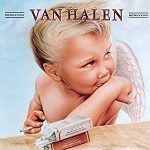
MM: The connection there was Ted Templeman. He was producing them at the time, and they had a track that they didn’t have any melody or lyrics for, so he enlisted me to help. So I got together with David Lee Roth, and I kind of came up with an idea for the melody, and I finished the song with him. It wound up being a track on the album 1984.
JM: I find it amazing how connected the world is.
MM: I think as you get older the world even gets smaller. It’s funny, it seems like I’ll run into somebody who lives two blocks from me who I haven’t seen all year, but somehow we’ll meet in a strange place. I think if you live long enough, the world gets to be a pretty small place.
JM: What else in the works for you? Are you thinking of recording some new stuff?
MM: Yeah, I’m always recording, at a snail’s pace sometimes. But I’m usually recording something and writing something. I started recording a little bit with a guy in Santa Barbara named Chris Pelonis, who I’ve worked with for years, who I’ve known for many years. I’ve compiled a record that’s more or less just piano and voice – in some cases just me at a piano singing, and in some other cases with just a couple of instruments. But we’re trying to keep it very bare bones, just to see what we come up with. Stylistically it’ll be something different from what I’ve done in the past, not so much rock stuff, more ballads and slow stuff.
JM: Do you have a target date for when you’ll finish that?
MM: I never really try to box myself in too much, because these days I’m not really on a label, so I don’t have those deadlines anymore. I try not to procrastinate too much, either. I’m hoping to get it done this year, at least close in on it pretty much by the end of the year.

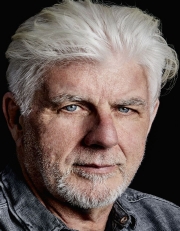
Discussion
No comments for “Interview: Michael McDonald 2018”